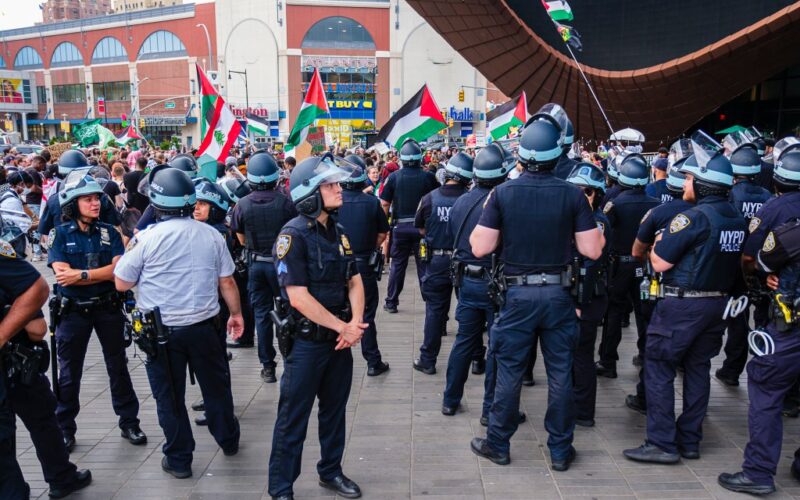Rather than rush cops from all corners to burgeoning political protests, the NYPD will now have to follow a detailed escalation plan dependent on the numbers and actions of demonstrators, according to a 2024 settlement agreement coming into effect.
Under the complex, four-tier model, which takes six pages to explain in the 42-page settlement agreement, the NYPD has to incrementally send cops to protests, dubbed “First Amendment Activity.”
One element requires police to “accommodate” protesters when they block vehicular or pedestrian traffic unless “critical infrastructure,” like a highway or access to a hospital, is being blocked.
The use of officers from the Strategic Response Group — cops with special protest training, some of whom have been accused of violence at rallies — is authorized only after three other levels have been reached, starting with regular patrol officers and officers assigned to NYPD community affairs.
The agreement limits the use of pepper spray, flex handcuffs, bicycles and strikes to the heads of protesters. It also limits encirclement of protesters, a tactic sometimes called “kettling” by protesters, except when arrests are necessary, the agreement states.
Molly Biklen, interim legal director of the New York Civil Liberties Union, called the steps “critical towards delivering on the promise of addressing police abuse at protests.” “Phase two establishes strong safeguards to stop the NYPD from indiscriminately flooding protests with police and adds reporting and oversight mechanisms,” Biklen said.
Jennvine Wong, supervising attorney with the Cop Accountability Project at The Legal Aid Society, said the measures puts “real guardrails” on the NYPD’s presence at demonstrations.
The Police Benevolent Association fought the changes before the union’s appeal was denied in March. “As we’ve said from the beginning, this settlement will hinder the response to demonstrations that suddenly turn violent, putting police officers, bystanders and protesters themselves at risk,” PBA President Patrick Hendry said:
“Our city leaders might not care about these safety risks, but police officers won’t ignore them. They will simply continue to leave the NYPD for other police departments, where they aren’t abandoned and needlessly endangered by their leadership.”
An NYPD spokesperson said the department is in compliance with the settlement agreement.
The triggering of the new procedures follows a period of required training and revising of police policies on deployment, use of force and rules around treatment of the media.
The deal also creates an oversight panel, known as the Collaborative Review Committee, to track the department’s compliance with the settlement. The city Department of Investigation has to rate the department’s response to two protests every six months and file a report.
The changes follow lawsuits filed by Jarrett Payne and 20 other people stemming from alleged police abuses of protesters during the George Floyd demonstrations of 2020.








